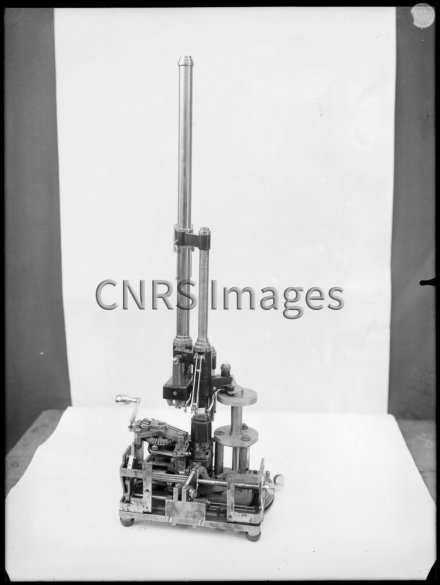Production year
1933

© Fonds historique / CNRS Images
19000001_0937
Tablet-making machine photographed on July 12th, 1933. In France, the use of tablets predominantly developed after WW1. Several companies therefore began proposing the production of tablet-manufacturing machines, and mass production took over the medical market. During the war, compacted powders had proved beneficial to the soldiers’ living conditions. The wides-pread use of compressed vegetable powder cubes ensued from the rebellions of 1917, when General Petain had pledged to provide soldiers with daily hot soup. Three photographs show the improvements of the new machine developed by the ONRSII to produce tablets by compacting powder. It functioned on a technique borrowed from English inventor William Brockedon, by compacting the powder between two punches and striking the upper punch with a mallet. Office national des recherches scientifiques et industrielles et des inventions. Extract from the book Inventions 1915-1939 by Luce Lebart.
The use of media visible on the CNRS Images Platform can be granted on request. Any reproduction or representation is forbidden without prior authorization from CNRS Images (except for resources under Creative Commons license).
No modification of an image may be made without the prior consent of CNRS Images.
No use of an image for advertising purposes or distribution to a third party may be made without the prior agreement of CNRS Images.
For more information, please consult our general conditions
1933
Our work is guided by the way scientists question the world around them and we translate their research into images to help people to understand the world better and to awaken their curiosity and wonderment.